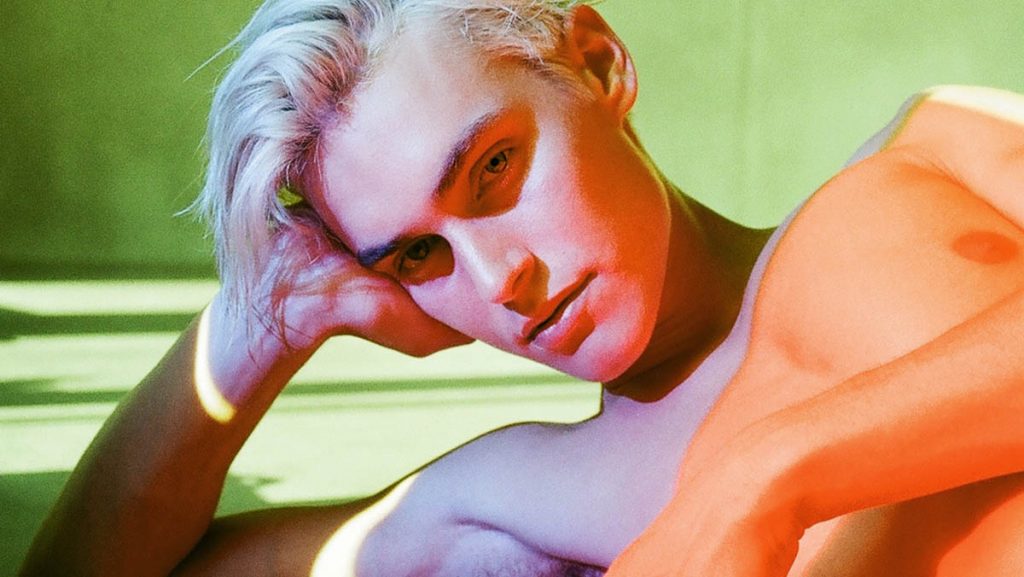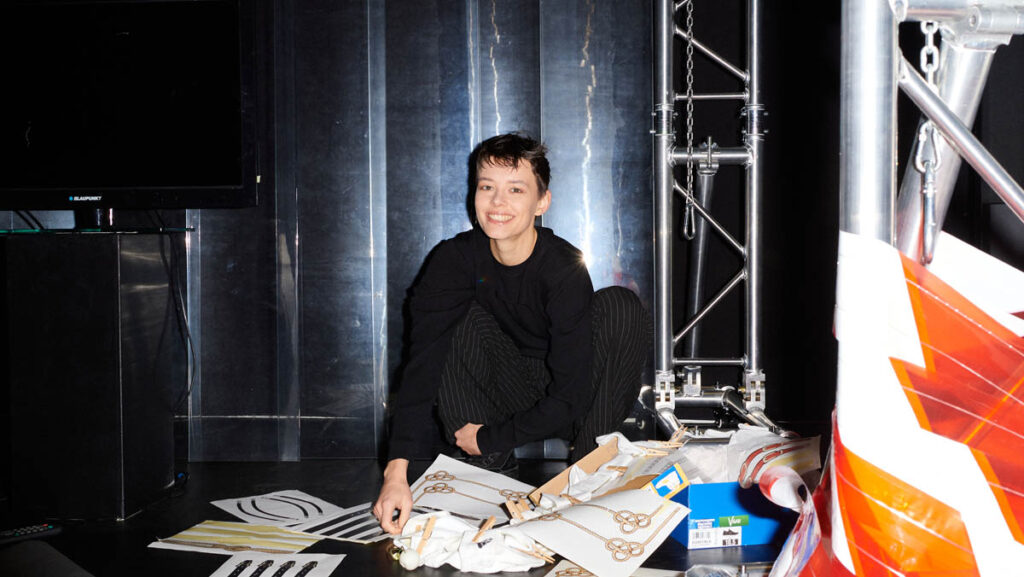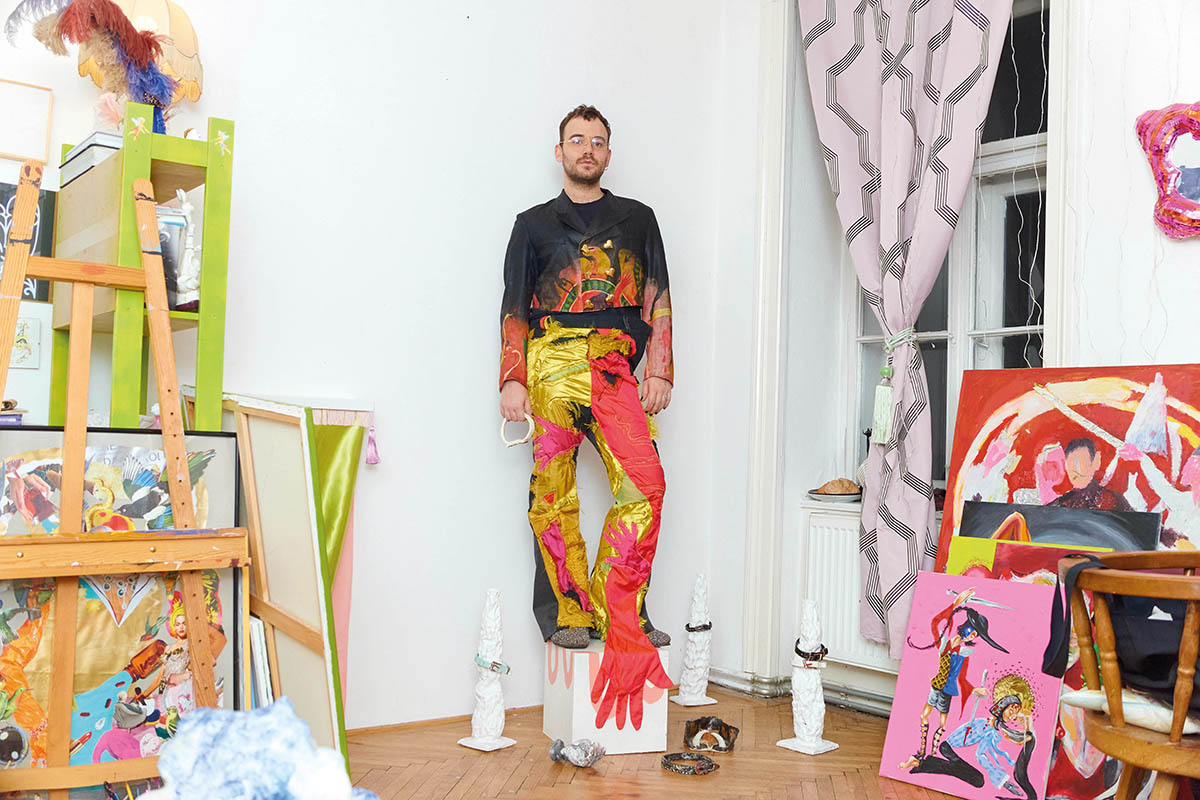
What did you do in your childhood? How did you spend your time? And when it came to the decision that you wanted to do art?
It’s an easy question because I have just recently started writing about my early childhood in my diary. My first touch with creativity had a lot to do with my grandparents. In the late 1990s and early 2000s, they were taking care of me and my sister, as my parents had to work. My grandfather was a famous journalist, and I was always in his home office, playing with his typewriter. They encouraged both me and my sister to draw, and drawing was the first art medium I had contact with. My grandfather was friends with a lot of artists and collected a lot of idyllic landscape paintings and some avant-garde works, which felt nostalgic even back then. My parents tried badly to introduce me to sports, but I was not good at it at all. Soon they realized it was not going to happen; all I wanted was to dance or paint. Then I started going to private drawing classes, and I did it until my first university days.
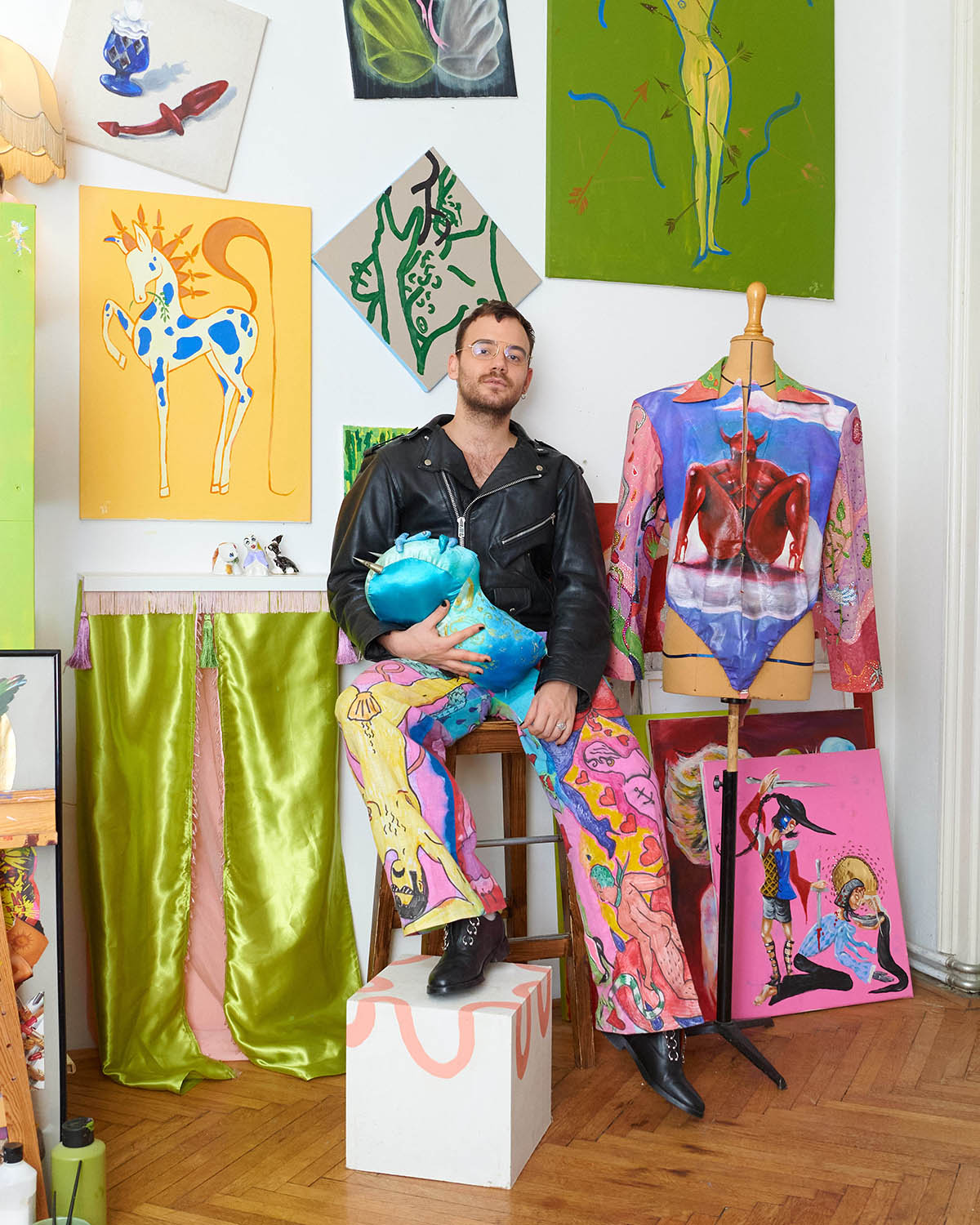
Set design is your background; how is your art influenced by it?
Yes, before starting at the Academy of Fine Arts in Vienna in the Contextual Painting class, my first studies were scenography studies. I felt that it was a compromise I made at that moment because I wanted to study something more fine art-connected, but I did well on my entrance exam, and I kept going. It was good, but there were a lot of technicalities and less creativity, which bothered me. I was never a theater kid, but it was nice to get to spend a lot of time with my colleagues in different theaters around the region. It was not hard at all to fall into the theater world. Now, I like the language of theater and apply it to my works. The theatricality of the work itself, as well as how it was installed, remained. It was good to think about the object in space and not be focused only on the object itself without spatial context.
How do you see the relationship between the stage and the exhibition space?
To exhibit something, especially in a white cube space, is already theatrical. Additionally, the social aspect of the exhibition opening is also what connects it so well to the theater. Art in any exhibition space is there to break the fourth wall. In the context of performativity, I believe everything can be viewed as a stage, from everydayness to artistic practices. Every piece I make is made with an awareness of that and therefore is part of this imagined stage.
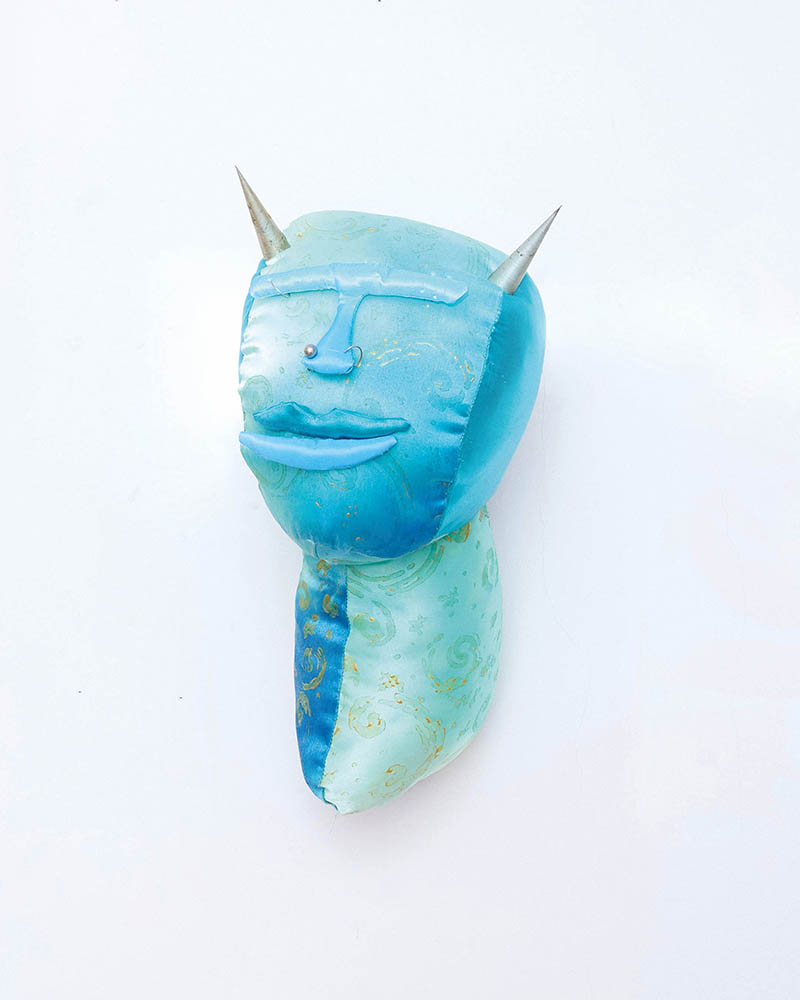
Jovan Glušica. Photo: Daniel Lichterwaldt 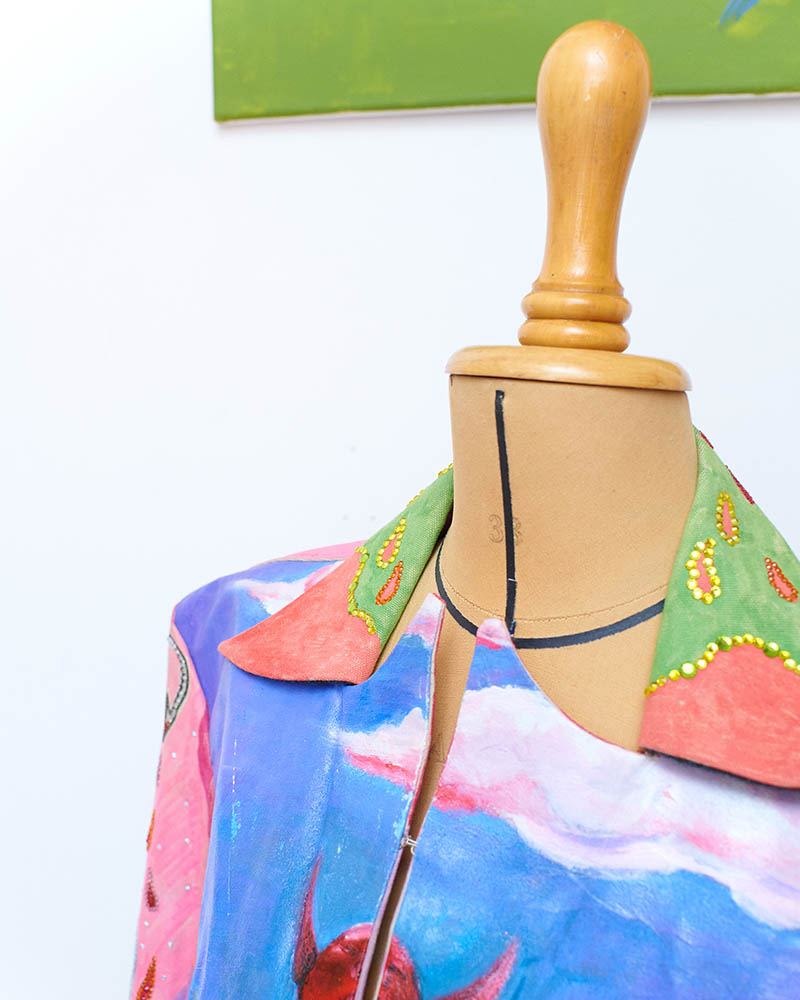
Jovan Glušica. Photo: Daniel Lichterwaldt
Do you work in the studio? How do you see your work as an artist? Is it only while producing or also before and after?
It is hard for me to share a working space, and to be in a collective studio, it was never super comfortable in my studio at the Academy. I prefer being alone with my delusions, where I can comfortably produce work and still maintain them. That’s why I have mostly worked at my home studio in the past few years. Regarding my work ethic, I have a hands-on approach, and I am very intuitive and expressive. I enjoy different media, including ceramics, painting, sewing, and various crafts. An equal part of the work itself is the research that goes into it, consisting of watching, reading, listening, and having many conversations with friends.
How does your working process look? Are you working in series or individual pieces?
I think about what I want to make and keep a journal and sketchbook close by. Sometimes I don’t make anything for months and then produce a lot in a short amount of time. I reference old ideas and sketches and upcycle them according to my current state. I tend not to spend more than a few days on a piece as I am impatient and need to have a start-to-finish cycle in close sight.
How are you choosing the materials you are working with? Where are you finding them?
When it comes to materials, it is always about what is available, and that is why I am often changing mediums. When I was younger, oil was something I didn’t enjoy because of its long drying process. Out of practicality, I use acrylic. Found objects as well. In a sculptural sense, I later started doing ceramics. I did a summer academy in Salzburg, Austria, in 2016 with the British artist Aaron Angell, and I discovered my love for fired ceramics. When it comes to textiles, I started learning sawing at the Academy, but later developed my skills, understanding, and appreciation of textiles as a medium with my partner, who is a fashion designer. Thinking about the textile not as a flat surface but as a three-dimensional shape helped me create my objects.
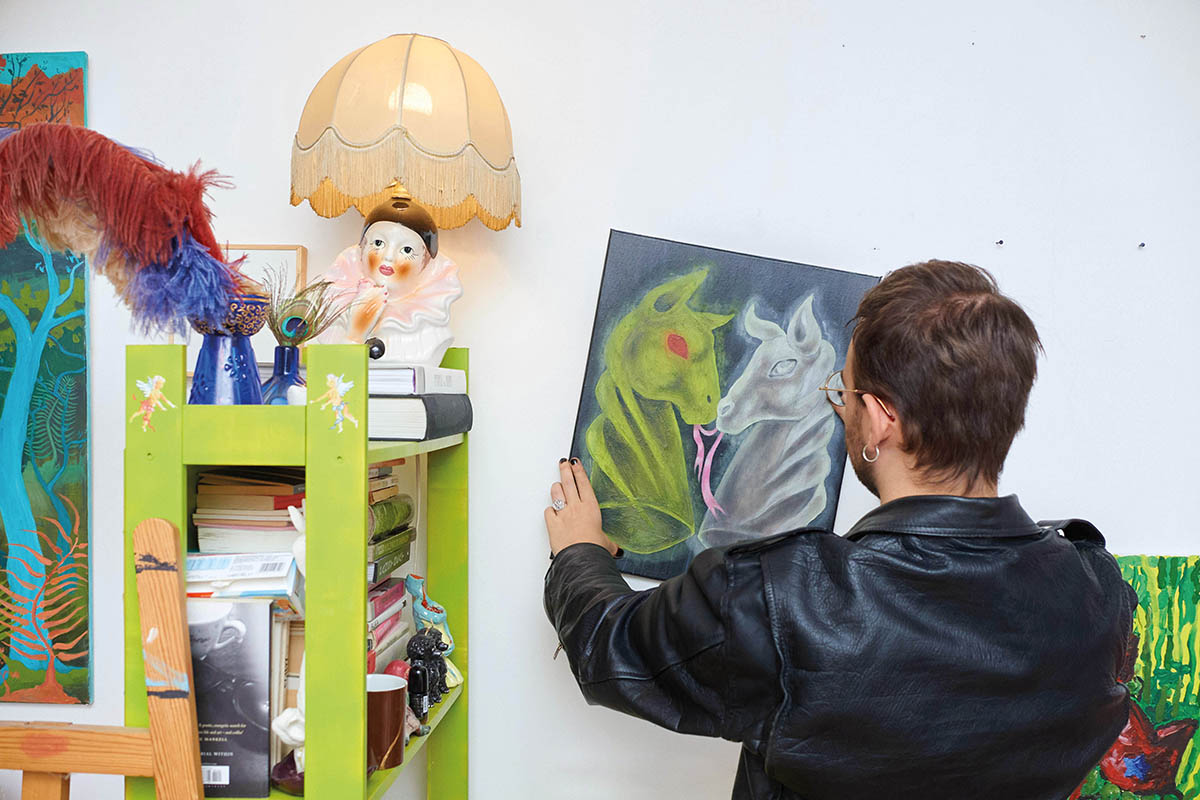
Motives in your paintings and drawings or on your objects? Where are they coming from? For example, one of your newest works, „Horses, Beasts,“?
This specific painting is a family portrait, deeply concerned with queer desire, love, and partnership. I was also recently listening to the Yugoslavian song „Konji zveri“ (Horse, Beasts) by Radmila Karaklajic, and this is a big part of the inspiration. I am definitely in my horse-girl era. To circle back to the beginning of the interview, I am exploring going back to the childlike primeval contact with creativity and expression. It is a direct, expressive exploratory process. Just like the childlike freedom of making up scenarios in your head and putting them out on canvas or paper.
How are queer and gender theory related to your practice?
I started exploring queer identity in my work in my first studies and got a lot of backlash back then from conservative surroundings. In contrast, when I started studying at the Academy of Fine Arts in Vienna, with Ashley Hans Scheirl as my mentor, working with these issues was encouraged. It was a great environment in the sense of exploring and learning about the spectrum of human existence in the context of art and creating, not just identity.
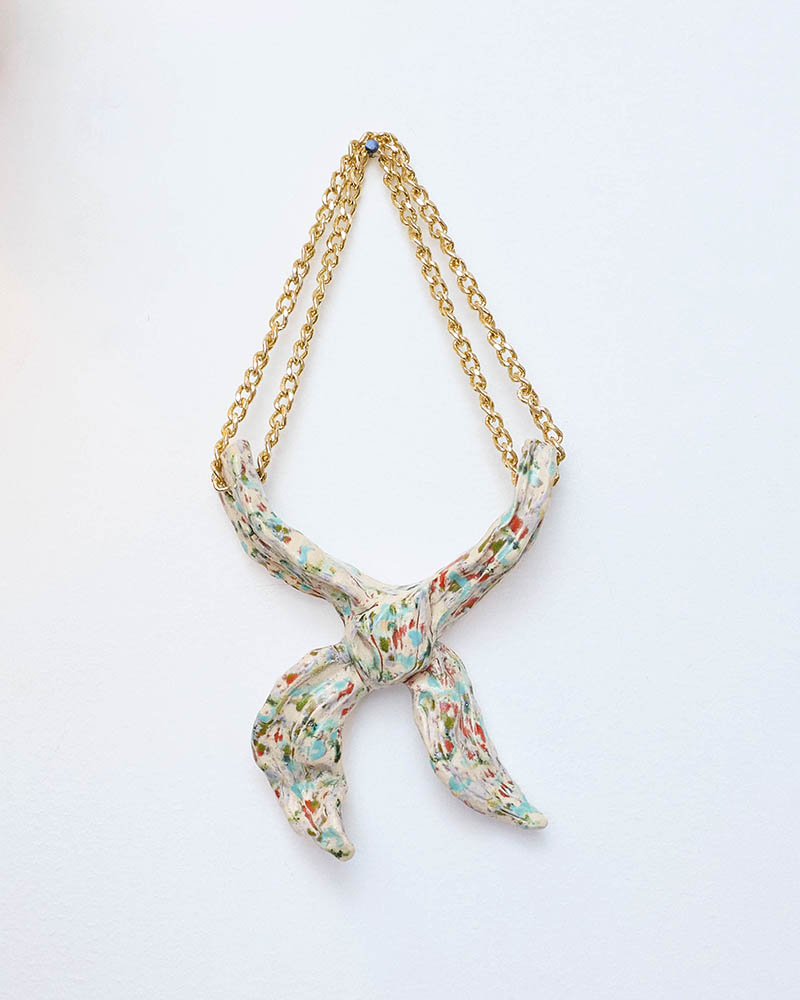
Jovan Glušica. Photo: Daniel Lichterwaldt 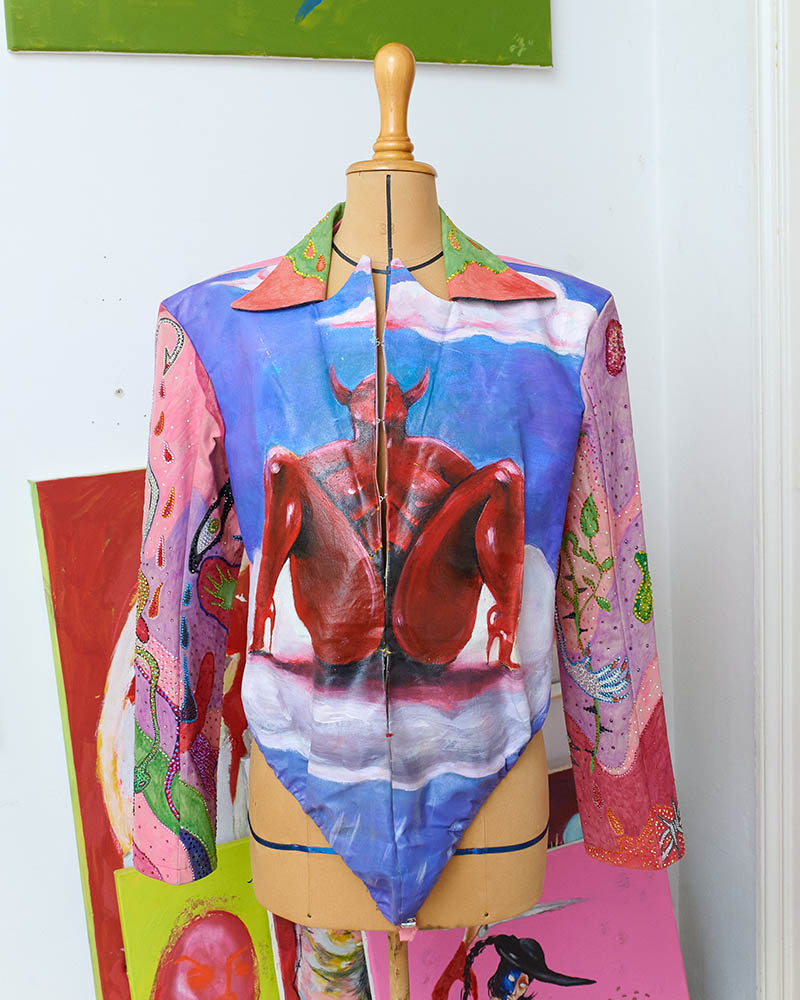
Jovan Glušica. Photo: Daniel Lichterwaldt
Is there such a thing as someone’s aesthetic? When you need to explain yours in a few words, what would they be?
I believe we are all collections of “references” that are super glued together in their unique way. When I was younger, I soaked up references, pop culture, and the underground, which were important for my personal growth. I inherited so many things and put them together in my way. RuPaul nicely said, “When you become the image of your imagination, it’s the most powerful thing you could ever do.” If I could describe my aesthetic at the moment, it would be a toss-up between Elizabeth Taylor in a wheelchair on the red carpet, after her seventh husband and her second stroke, and Courtney Love throwing a make-up compact at Madonna during the 1995 VMAs.
Is clothing part of your practice? For whom are you making the clothes? Who is the person?
I did start making a lot of wearable pieces, and the character for whom they are made is my alter ego (or just my ego). My “dark side,” which is a rebellious and sexy provocateur, To wear something with self-made elements that are special and expressive, somewhere between punk and camp, is where the stuff I like to make lies.
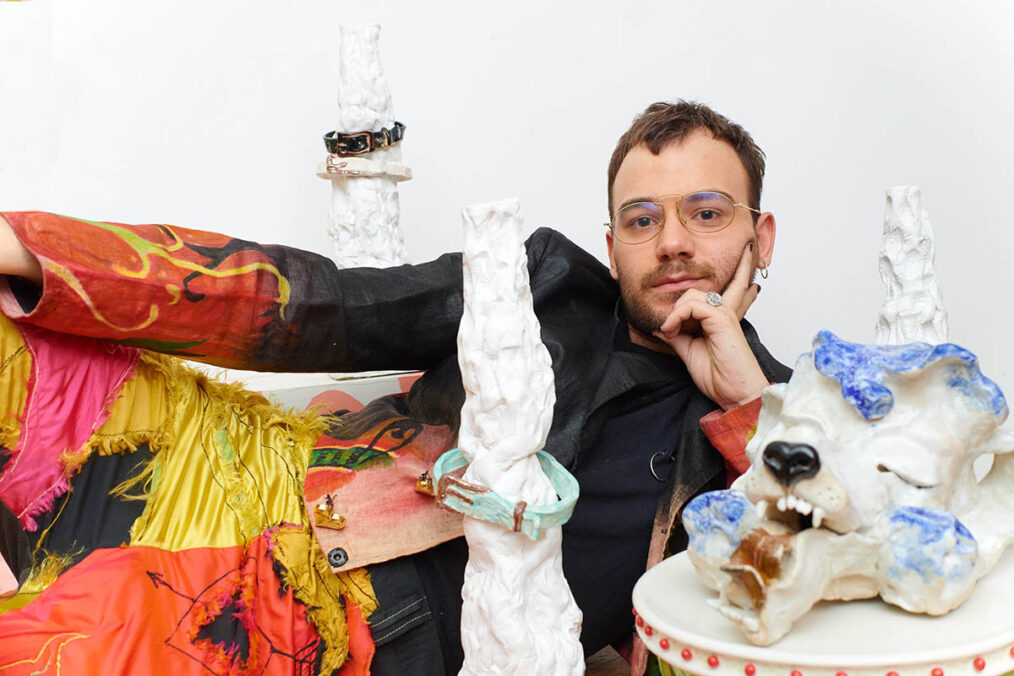
What are you going to wear in 2024? What is coming?
We are heading towards a more ethereal kind of expression. I hope the darkness that has been in fashion for a while now is going away, and it is time for light to be in again. Let the light in. Dark is good, and dark is nice, but we’ve had enough of it, and it is time for playfulness.
Could you please share with us some of your plans and wishes for the next year?
I am feeling the most creative in a very long time, and I am hyper-producing at the moment. I am enjoying every step of it, so I am sure something will come out of it. I am already planting some seeds to collaborate with colleagues and friends and look forward to.
Jovan Glušica – www.instagram.com/gluesica/
Jovan Glušica (they/them) is a Serbian artist, stylist, and make-up artist, currently working in Vienna. Before studying Contextual Painting at the Academy of Fine Arts in Vienna, they studied Stage Design at the Faculty of Technical Sciences in Novi Sad, Serbia. In their artistic practice, Jovan explores themes such as queerness, migrant identity and the challenges of the working class at the intersection of fine art, scenography and fashion.



